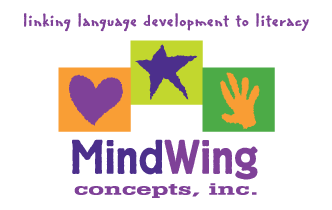Secure Checkout + FREE SHIPPING (U.S. Orders over $60)
Menu
-
- Home
-
About Us
-
The Approach
-
Linking Language & Literacy
-
Professional Learning
-
Learning Resources
-
SHOP
-
Blog
-
- About MindWing
- Our People
- Contact Us
- Your Account
- Login
-
Spain (EUR €)

Secure Checkout + FREE SHIPPING (U.S. Orders over $60)
Tool Tuesday: Google’s Arts and Culture Games
May 25, 2025 2 min read
 If Google’s Arts and Culture website can be taken as a model, it seems like artificial intelligence (AI) is rejuvenating the interactive website. For some years there was a wealth of interactive websites that allowed for making choices and creating stories, but these seem to have faded with the retirement of technologies like Flash, and also by the redirection of priorities through the pandemic years. Check out Google’s growing library of games for some hope for this form of instructional technology!
If Google’s Arts and Culture website can be taken as a model, it seems like artificial intelligence (AI) is rejuvenating the interactive website. For some years there was a wealth of interactive websites that allowed for making choices and creating stories, but these seem to have faded with the retirement of technologies like Flash, and also by the redirection of priorities through the pandemic years. Check out Google’s growing library of games for some hope for this form of instructional technology!
Sparky is a great one to start with. In this activity, you create inventions by combining everyday objects. Begin by choosing a purpose for the invention—food, music or travel—then allow your students to use their imaginations and collaborate. Following the combination of items (which is a great context for sentence building with cohesive ties), the invention is generated and described. The language and images provided would be a great topic for informational text mapping with ThemeMaker’s Descriptive or Sequence maps (to describe the steps for how the invention is used), or to create a story with Story Grammar Marker® about the problem the invention solves. Maybe also pair this with a good old Schoolhouse Rock video Mother Necessity, or the invention-themed picture book UGH, by Arthur Yorinks, or a list of other idioms about inventing.


Among other possibilities to explore on the Arts & Culture website, Where is Hopper? will have you using a mock smartphone interface to follow clues to find Hopper the penguin across different locations and artworks inspired by real museum collections. This activity cries out for an exploration of setting, as I first tracked Hopper to Barcelona. Google Earth and/or Street View would be a great way to provide interesting visuals to students and have them complete a Descriptive Setting Map, along with tracking the story of your search with SGM®.

Finally, take a look at The Descent of the Serpent. This one is good for your mid- to upper elementary or even middle school students who won’t be put off by the slightly creepy theme and vibe. Players are tasked with retrieving 20 sacred artifacts stolen by the deity Tezcatlipoca, representing symbols from the Aztec Sun Stone. The mission is to return them to Chichen Itza before the solar equinox to prevent catastrophic floods! Lighter, lower-stakes gameplay is offered in the Story mode, and this activity would be a great way to target expository text comprehension through the completion of a List Map describing your findings.

If you are looking for more specific information on the connections between video games and communication or storytelling, Dr. Erik Raj has a great session on this available through Bright Ideas Media.
Leave a comment.
Comments will be approved before showing up.
